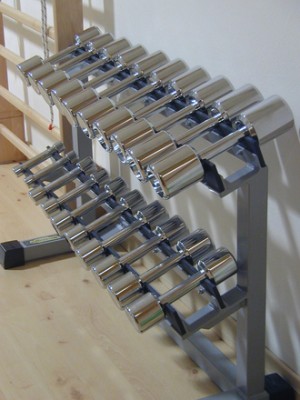 In this blog post I am going to walk you through a very specific process for creating gym financial projections. At the end of this process you should have realistic sales projections for your gym in your specific proposed location.
In this blog post I am going to walk you through a very specific process for creating gym financial projections. At the end of this process you should have realistic sales projections for your gym in your specific proposed location.
I have included an Excel Template here to project revenue for your gym.
It is a lot easier to project revenue for an existing gym because you can simply apply growth rates, but what about a brand new gym? For a startup gym you are going to have to make a ton of assumptions. I have built these assumptions into the Excel template and now I am going to walk you through the various assumptions and how they are built into your revenue model.
Step 1 – How far are members willing to travel to come to your gym?
Initially we need to make some assumptions to determine how big your potential market is. So if your gym is in a rural area, or in a city that draws people from a large radius, then you might be able to pull people from 20+ miles away. If your gym is in a big city like New York, you might only be able to pull people from a radius of 5 or 6 city blocks.
Step 2 – What is the total population within the mile radius that your potential members are willing to drive?
Once you have a radius that people are willing to travel to get to your gym, you can either look for a free option to find the population within that radius (sometimes state websites have useful free tools for this type of research) but if you don’t want to mess with it, you might try Cubit which offers a “Radius Report” for $49 where you can get a bunch of demographic data around any point in the US. Let’s assume for this example that there are 100,000 people within driving distance to your gym.
Step 3 – What percentage of people within your potential market would potentially buy a gym membership?
Once you know how many people are in your potential geographic market, you need to make assumption to determine what percentage of those people might buy a gym membership. This is where Statistic Brain can be helpful with their Gym Membership Stats report. According to the report, 58 million people in the US used a gym or health club, and the US population is 320 million so we could estimate that approximately 18% of the US population will have a gym membership at some point throughout the year.
Step 4 – The number of people in step 3 is your target market
So your target market should be the number of people in your geographic radius (we are assuming 100,000 for this example) x 18% and we can call that your “Target Market.” So your target market is 18,000 people.
Step 5 – What percentage of your target market will hear about your gym each month?
We have to make another assumption here and guess the percentage of your target market that will hear about your gym each month either through marketing and advertising or word of mouth. Let’s assume that 10% of your target market will hear about your gym each month, so 18,000 x 10% = 1,800 impressions.
Step 6 – What percentage of those who hear about the gym will try visiting each month?
Now out of those 1,800 what percentage will try visiting the gym that month? Let’s assume 10% will try visiting the gym, so 1,800 x 10% = 180 new visitors.
Step 7 – What percentage of visitors will convert into members?
Now let’s just keep things simple and assume that 10% of visitors convert into new members, so 180 x 10% = 18 new members.
Step 8 – What percentage of members will cancel each year?
This article from Club Industry states that the average gym retains 66% of their members each year.
Revenue Model Excel Template for Gyms
I took all of these assumptions and built them into a spreadsheet template that you can use for your gym.
Again you can access that Excel template here.
Once you have your revenue model complete, you can use ProjectionHub and complete the rest of your financial projections and get a full set of profit and loss, balance sheet, and cash flow projections. Let me know if you have any questions along the way.
Leave a Reply